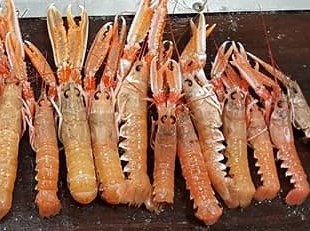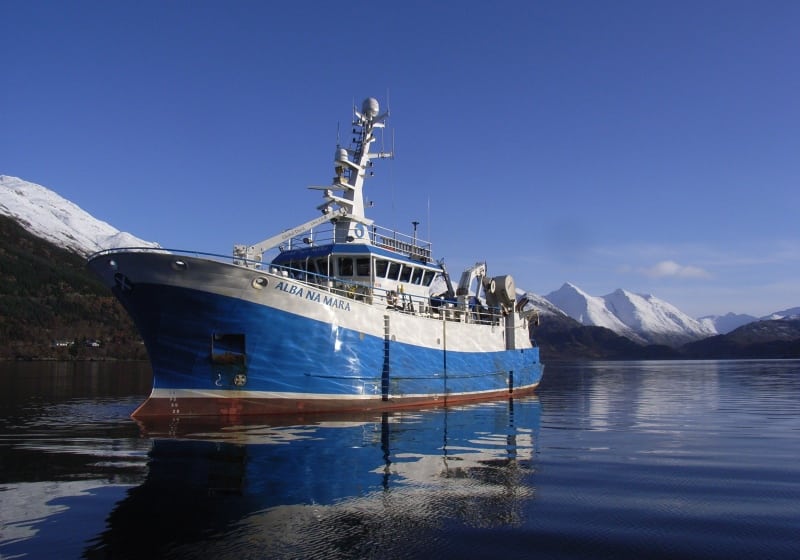Marine
Camera Trials and Nephrops Trawls
January 16, 2019 by Marine Directorate Communications No Comments | Category Fisheries, Marine Directorate general, Marine Directorate Science, Marine Directorate Surveys, Marine Litter, Research Vessel Surveys, Science, Technology, Engineering, Maths_STEM
Survey: 0119A Alba na Mara Programme
Duration: 05 – 21 January 2019
Objectives:
- Calibrate the RoxAnn Acoustic Seabed Mapping System.
- Obtain video footage to estimate Nephrops burrow entrance size.
- Compare two different methodologies to establish Nephrops burrow abundance using the sledge and drop frame underwater TV (UWTV) systems.
- Monitor burrow reconstruction following trawl activity.
- Trial the high definition camera.
- Observe burrowing fauna on Nephrops grounds using the static camera frame.
- Use the video footage to record occurrence of other benthic fauna and evidence of commercial trawling activity.
- Collect trawl caught samples of Nephrops for comparison of reproductive condition and morphometrics.
- Record and collect any trawl caught marine litter.
Procedure:
 After calibrating the RoxAnn system the vessel will make its way to Loch Torridon, where a static camera frame, (equipped with a time lapse camera, flash and power supply) will be lowered onto the seabed on Nephrops grounds. Depending on the weather and progress with the work schedule, this frame will remain in place until the day before the half-landing, when the frame and camera will be recovered, the data downloaded and then returned to the seabed until the work on the west coast has been completed near the end of the survey.
After calibrating the RoxAnn system the vessel will make its way to Loch Torridon, where a static camera frame, (equipped with a time lapse camera, flash and power supply) will be lowered onto the seabed on Nephrops grounds. Depending on the weather and progress with the work schedule, this frame will remain in place until the day before the half-landing, when the frame and camera will be recovered, the data downloaded and then returned to the seabed until the work on the west coast has been completed near the end of the survey.
Comparative trials between the drop frame and sledge UWTV system will be carried out during the remainder of the first half of the survey. This work will be undertaken at several sites in the Sound of Raasay and the Inner Sound (as time and weather permits) by deploying the sledge five times on known Nephrops grounds, in parallel tracks 200m long and approximately 50m apart. The drop frame will then be deployed over the same ground a further three times, with video of the sea bed being recorded at all times with both methods.
During the comparative trials, a high definition camera will be attached to the TV sledge to record footage in parallel to the standard analogue Konesberg camera used in UWTV surveys. A comparison of the two formats will be undertaken and examined for quality control purposes.
During the second half of the survey, two sites will be surveyed using both the TV sledge and the trawl. Initially the operation will involve carrying out five standard sledge tows on known Nephrops grounds, 500m apart in a linear path at both of the trawl sites. Following the sledge work the trawl will deployed over the areas previously surveyed by the sledge. Each of the sites where the sledge was deployed will be revisited on a regular basis (where practicably possible) over the remaining days of the survey and the sledge redeployed on the original positions. The cod end will remain open during the trawls in an effort to return as many burrowing animals to the grounds as possible.
Throughout the survey, two lasers on an adjustable bracket will be attached to the sledge. The distance between the lasers will be adjusted between deployments and provide a comparative scale to estimate burrow size.
Time and weather permitting, trawling may take place and all Nephrops caught during the trawls will be assessed for morphometric, weight, maturity and sex data. All landed litter will be recorded and returned to port.
Gear:
- Large TV drop frame;
- TV sledge;
- Static camera frame;
- 1 x 600m umbilical towing cable;
- 1 x armoured cable;
- Video cameras and associated equipment (plus backup);
- Stand-alone stills camera, recorder and power supply (for static camera frame);
- Four lasers and 60cm bracket (for the drop frame);
- Adjustable laser bracket;
- 1 x BT201 prawn trawl (plus minimal spares);
- Day grab, sieves and table;
- Prawn sorting table; and
- Go-Pro deep water housing.
Further Information:
Tags: Alba na Mara, Drop-frame, Inner Sound, research, samples, sampling, science, seabed mapping, Sound of Raasay, Survey, trawling, trials, underwater tv



Leave a comment